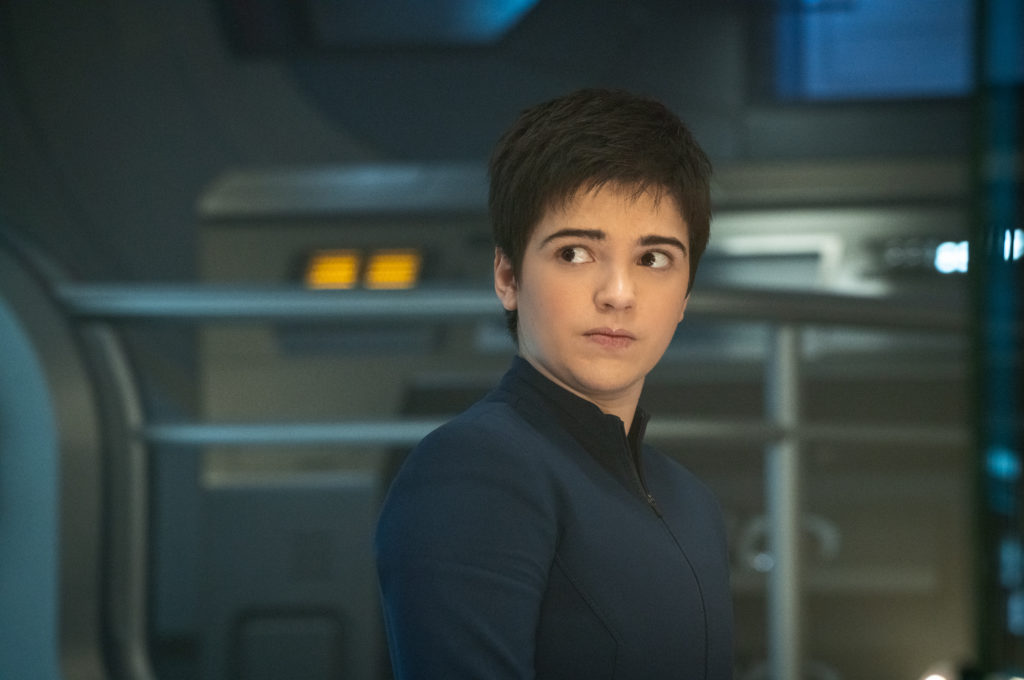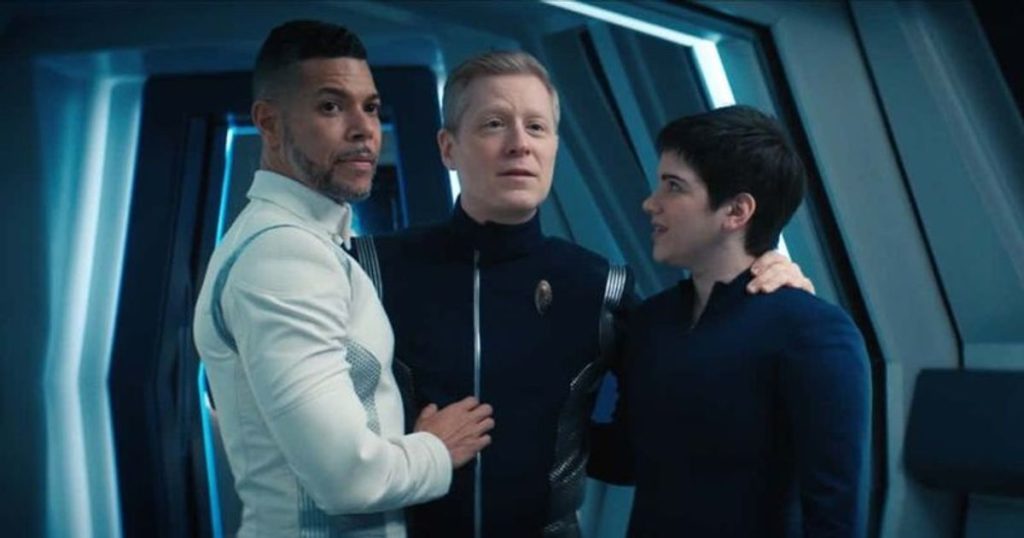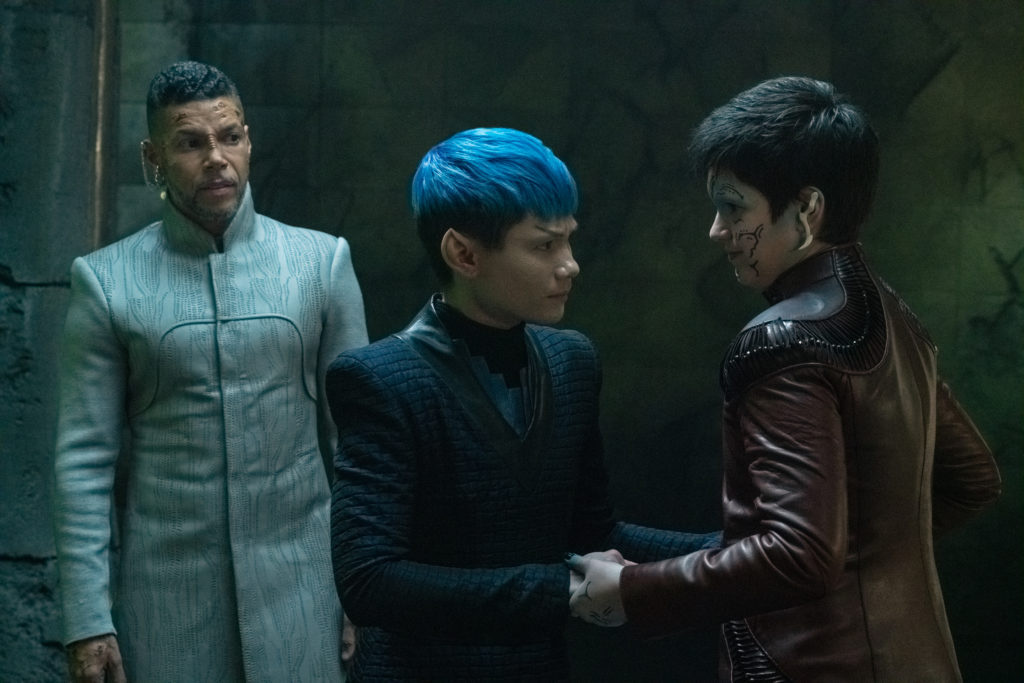
“Terra Firma, Part 1” — Ep#309 — Pictured: Blu del Barrio as Adira of the CBS All Access series STAR TREK: DISCOVERY. Photo Cr: Michael Gibson/CBS ©2020 CBS Interactive, Inc. All Rights Reserved.
Queer representation is always important. Too often queer people have been erased from our culture, or reduced to dehumanising stereotypes. The Sassy Gay Friend, or the Tragic Trans Victim. The media is how many of us relate to the world, so good queer representation in media can affirm our identities and help others recognise our humanity. And I think this is doubly true when it comes to utopian sci-fi like Star Trek. The show presents an idea of what the world could be if everything goes right. If trans people are not part of the show then it begs the question – “What happened to us?” Transness has existed in one form or another throughout human history, so a vision of a future without us comes with disturbing implications.
And unfortunately this is an area which Star Trek has been less than perfect. As explored in a previous Women at Warp episode, representation is rare and frequently flawed. At best we’ve seen positive implicit representation (such as the adoption of Jadzia Dax by the trans community), at worst episodes leave a bad taste in the mouths of many trans Trekkies. And as is often the case in sci-fi, transness (or to be more accurate, the existence of genders outside of the male-female binary) is shown in aliens or robots rather than humans. That’s why the inclusion of Adira Tal (a non-binary human bonded with a Trill symbiote) in Season 3 of Star Trek: Discovery is so important to me.
In Episode 8 they come out to Paul Stamets as non-binary in a scene that perfectly captures the emotion of that moment. The fear and uncertainty beforehand, the vulnerability of sharing your pronouns for the first time, and the relieved joy that comes with acceptance. I’ve watched that scene dozens of times and it still makes me cry, because that kind of representation is something so rarely seen in any kind of media. So when it does come up, it comes with a painful realisation of what we’ve been denied for so long.

Hugh, Anthony Rapp as Paul Stamets, and Adira
Connected to this, we also see Adira form a found family with their GAY SPACE DADS* Paul and Hugh. Found family is a common theme in Star Trek, but it also speaks to an experience which is central to modern queer history and culture. The affirmation and acceptance of older queers (e.g. Stamets casually referring to Adira as ‘they’ later in the episode) is a simple, but incredibly meaningful, form of support – and again this is something rarely shown in mainstream media.
What’s awesome is that their storyline has these beautiful scenes without defining them purely by their transness. Adira Tal is a brilliant scientist, the first example of human-symbiote bonding, and they help the Discovery reconnect with Starfleet. They’re not a Non-Binary Character defined by queer trauma and their trans identity, they’re a fully rounded character who happens to be non-binary.

Hugh Culber, Ian Alexander as Gray, and Adira
When talking about trans characters we must also look at the question of who should play these roles, and…oh God I’m so bored of this debate. If you’ve not come across this topic then there are a countless other articles (written much better than I could) exploring this. I’ll simply say I’m glad that the actor who plays Adira Tal is non-binary. In addition to this the writers actively engaged with them to make sure the script reflected their experiences of being non-binary, bringing more authenticity to their performance.
Infinite Diversity in Infinite Combinations is both a common theme in the show, and an article of faith among many fans. This principle of celebrating different experiences is one of the best things about the Star Trek universe, and it brings me so much joy that this is finally broadening to include explicitly LGBT+ characters as well.
*a phrase so wonderful it deserves all caps dammit!